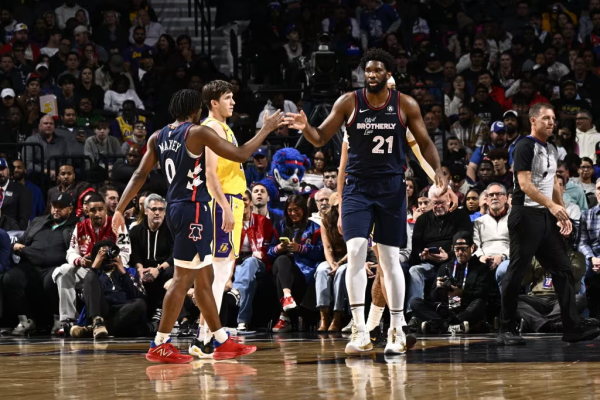Climb Away
Football, baseball, and basketball are not the only sports in the world, even though it may seem so in America because of television coverage. One sport, for example, that may not gain so much attention is rock climbing.
Rock climbing was first considered a sport in the late 19th century. The basic premise of the sport is to climb from the bottom to the top. Not only do you need to reach the top, in order to successfully complete a climb, you must maneuver yourself back down to the base of the climb.
Here at Central Bucks South we have multiple rock climbers: Lindsey Quinn and Amelia Siwa. These two sophomore girls are members of a rock climbing team at Doylestown Rock Gym and have been climbing for five years.
“I rock climb because it’s different from the average American sport,” Lindsey said. She added that she wanted to try a sport that was unique and different.
Most sports require physical strength and mental capabilities to achieve or win. According to Amelia, rock climbing involves many skills.
“There are many aspects that are involved in climbing: balance, trust, endurance, and mentality,” she said. “Personally I believe mentality is the fundamental building block of climbing.”
Amelia explained that rock climbing takes problem solving or “mentality” before anything else.
Lindsey agrees with Amelia about the problem solving aspect involved in rock climbing. “Climbing helps my problem solving more than my body. It’s more of a mental and technical sport than it is physically,” she said.
Although Amelia thinks that rock climbing takes a lot of mental capabilities, she said it does take physical skills. “It definitely takes a great deal of strength to be able to keep up with what climbers do every time they walk into the climbing gym. The main muscles you tend to use are your forearms, abdominal strength, and your upper back/shoulder muscles.”
Rock climbing is not just a hobby; it can become a competitive sport as well, according to Lindsey and Amelia.
Amelia said she loves being able to walk in to her rock gym and train and not worry about competition.
Amelia, however, recognizes the competitive aspect of rock climbing. “It becomes a competition that would compare to any other sport, where people care more about themselves than they do about the well being of others around them.”
Lindsey said kid rock climbers are “fearless” when it comes to competition and explains that many train daily. She went on to say, “Climbing is very competitive even though it might seem like no one in the county rock climbs.”
These two girls say there is more to the sport than competition and mentality. “Being a climber really just means you’re a great person, no matter who you are,” Amelia said. “We’re all people who do this unknown activity in our own little community and it’s really nice to meet people you’ve never seen before and share that with them.”
Lindsey likes the aspect of being in her own little world when she climbs. “I like how when I climb I go into my own little world and forget about all my problems, it’s just myself and the wall.”
Rock climbing can be a very dangerous sport; on average 25 people die from rock climbing accidents. Rock climbers use a lot of equipment to help them remain safe and climb better.
“You need a lot of equipment when climbing,” Lindsey said. “You need a chalk bag with powder chalk in it to keep your hands from getting sweaty, a harness which ties you to a rope so you don’t die if you fall from 50 from the ground, and special climbing shoes so you don’t slip down off the climb.”
Although you need a lot of materialistic equipment, Amelia and Lindsey both agree that the most important tool when climbing is your brain. Both girls plan to continue to climb and both said that they would encourage the sport of rock climbing to anyone who wanted a challenge.






